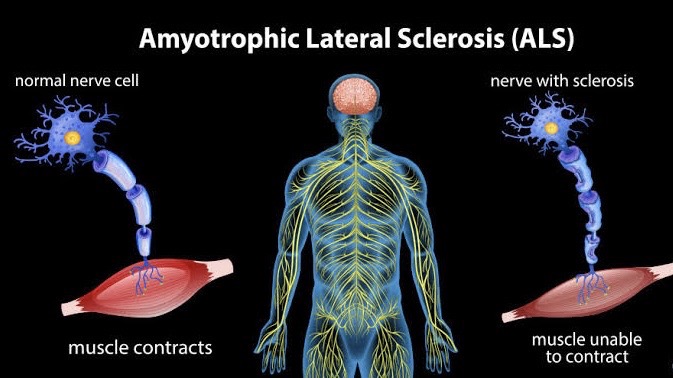Understanding Amyotrophic Lateral Sclerosis (ALS)
Amyotrophic Lateral Sclerosis, commonly referred to as ALS, is a progressive neurodegenerative disease that affects nerve cells in the brain and spinal cord. This condition leads to the loss of muscle control and eventual paralysis.
Causes and Risk Factors
While the exact causes of ALS are still not fully understood, research suggests that it may involve a combination of genetic and environmental factors. Some known risk factors include:
– Genetics: About 10% of ALS cases are inherited, with specific gene mutations contributing to the disease.
– Age: ALS is more common in people between 55 and 75 years old.
– Family History: Having a family member with ALS increases the risk.
Symptoms
ALS symptoms vary from person to person, but common signs include
– Muscle weakness or twitching: Starting in one limb or spreading throughout the body.
– Difficulty speaking or swallowing: As the disease progresses, it can affect speech and swallowing abilities.
– Breathing difficulties: In advanced stages, ALS can impair respiratory function.
Current Treatments and Research
Currently, there is no cure for ALS, but various treatments can help manage symptoms and slow disease progression. Some approved treatments include
– Riluzole: The only FDA-approved medication for ALS, which modestly prolongs survival by reducing glutamate release.
– Tofersen: An antisense oligonucleotide therapy targeting SOD1 mRNA, approved for treating SOD1-ALS.
Researchers are actively exploring new therapeutic approaches, including
– Interleukin-2 (IL2LD): A potential treatment that may slow functional decline and extend lifespan when combined with standard care.
– Antisense oligonucleotides: Targeting specific genes or RNA sequences to prevent disease-causing protein production.
– Gene therapy: Delivering genetic material to cells to prevent or treat disease.
Ongoing Clinical Trials
Several clinical trials are underway to evaluate promising ALS treatments, including
– HEALEY ALS Platform Trial: A collaborative effort to accelerate the discovery of new ALS treatments.
– PrimeC: A combination therapy utilizing ciprofloxacin and celecoxib to target multiple ALS mechanisms.
– Pridopidine: A Sigma-1 receptor agonist showing potential in slowing disease progression.
Future Prospects
While ALS remains a challenging condition to treat, ongoing research and clinical trials offer hope for improving patient outcomes. Advances in understanding ALS pathology and developing targeted therapies may lead to more effective treatments in the future.

